Triumph Engineering Co Ltd was a British motorcycle manufacturing company, based originally in Coventry and then in Meriden. A new company, Triumph Motorcycles Ltd, based in Hinckley, gained the name rights after the end of the company in the 1980s and is now one of the world's major motorcycle manufacturers.

The Triumph Triples are a family of modern DOHC inline three-cylinder motorcycle engines made from 1990 onwards by the Triumph Motorcycle Company at their Hinckley, Leicestershire factory. The inspiration for the later triples was the pushrod Triumph Trident, produced from 1968 to 1974 at the Triumph factory at Meriden Works.

The Triumph Thunderbird is a British motorcycle that was introduced by Triumph in 1949 and produced in many forms until 1966. The name was used three more times for new and distinct Triumph models.

The Triumph Trident and BSA Rocket 3 was a technically advanced, high-performance roadster motorcycle made by Triumph Engineering and BSA from 1968 to 1975, and sold under both the Triumph and BSA marques. Alongside the Honda CB750, and later the two-stroke Kawasaki triples, it brought a new level of sophistication to street motorcycles, marking the beginning of the superbike era. The Honda CB750 overshadowed the Trident to be remembered as the 'first superbike', in spite of the Triumph Trident actually debuting before the Honda by a few weeks.

The Triumph Bonneville is a standard motorcycle featuring a parallel-twin four-stroke engine and manufactured in three generations over three separate production runs.
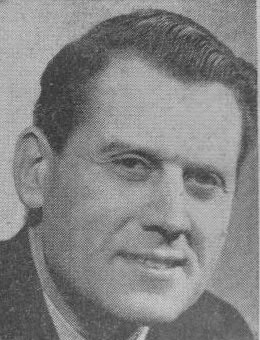
Douglas Lionel Hele was a pioneering British motorcycle engineer with Triumph and other firms: BSA, Douglas and Norton. He was born in Birmingham in 1919 and died in Hagley, Worcestershire on 2 November 2001.
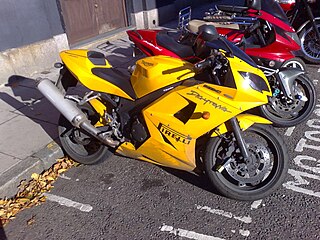
The Triumph Daytona 600 is a name given to two different motorcycles.
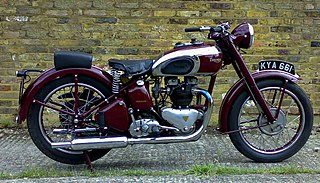
The Speed Twin 5T is a standard motorcycle that was made by Triumph at their Coventry, and later Meriden factories. Edward Turner, Triumph's Chief Designer and Managing Director, launched the Triumph Speed Twin at the 1937 National Motorcycle Show. It was a 500 cc OHV vertical twin in a lightweight frame and the first truly successful British parallel twin, setting the standard for many twins to follow. After World War II the Speed Twin was responsible for the survival of Triumph, and several major British marques offered a 500 cc twin designed on similar lines to the Speed Twin.
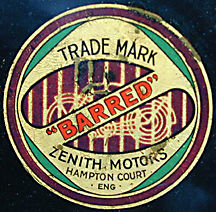
Zenith Motorcycles was a British motorcycle and automobile manufacturer established in Finsbury Park, London in 1903, by W. G. Bowers. Automobile manufacture only lasted from 1905 to 1906. The first Zenith motorcycle was the 'BiCar' of 1903, based on Tooley's Bi-Car design, which was purchased by Zenith for its own production. The BiCar was a unique design with hub-center steering and a low-slung chassis with the engine centrally fixed.
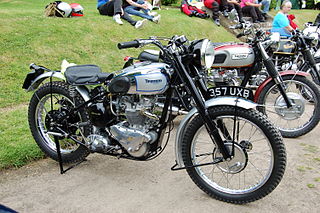
The TR5 Trophy was a standard motorcycle made by Triumph Engineering at the Meriden factory between 1949 and 1958.

Triumph Motorcycles Ltd is the largest UK-owned motorcycle manufacturer, established in 1983 by John Bloor after the original company Triumph Engineering went into receivership. The new company, initially called Bonneville Coventry Ltd, continued Triumph's lineage of motorcycle production since 1902. They have major manufacturing facilities in Thailand.
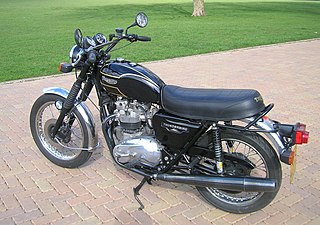
The Triumph TR65 Thunderbird is a motorcycle made by the Triumph worker's co-operative at the Meriden factory from 1981 to 1983. The TR65 was a reintroduction of the Triumph Thunderbird model name first used on the original 6T Thunderbird of 1949. A short stroke model, the Daytona 600 was designed in 1983 but not produced.

The BSA A7 was a 500cc motorcycle model range made by Birmingham Small Arms Company (BSA) at its factory in Armoury Road, Small Heath, Birmingham. The range was launched in 1946 using a 495 cc (30.2 cu in) long stroke engine. An improved 497 cc (30.3 cu in) version based on the BSA A10 engine was launched in 1950. The various A7 models continued in production with minor modifications until 1961/2 when they were superseded by the unit-construction A50 model.
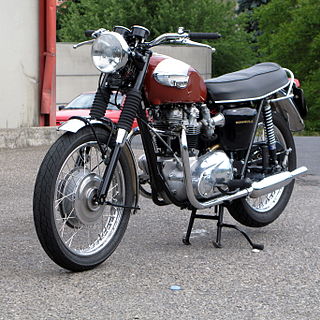
The Triumph Bonneville T120 is a motorcycle originally made by Triumph Engineering from 1959 to 1975. It was the first model of the Bonneville series, which was continued by Triumph Motorcycles Ltd. The T120 was discontinued in favour of the larger 750 cc T140 in the early 1970s.
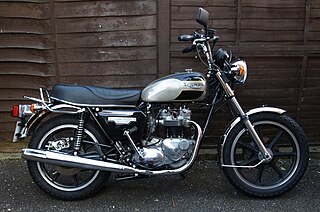
The Triumph Bonneville T140 is a standard motorcycle with a 750 cc (46 cu in) capacity engine that was designed and built by Triumph Engineering at Meriden near Coventry.
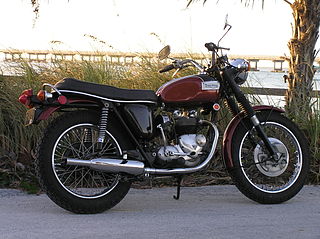
The Triumph Tiger Daytona is a motorcycle made by Triumph from 1967 to 1974.

The Triumph Tiger 110 is a British sports motorcycle that Triumph first made at their Coventry factory between 1953 and 1961. The T110 was developed from the Triumph Thunderbird and first appeared in 1954.

The Triumph Tiger 80 is a British motorcycle made by Triumph from 1936 until 1940. There was also a 250cc Tiger 70 and a 500cc Tiger 90. Production of the Tiger ended after the outbreak of World War II and never resumed after heavy German bombing destroyed the Triumph works at Priory Street in Coventry. in the Coventry Blitz in 1940 by
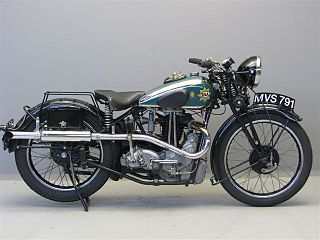
The Empire Star was a standard motorcycle made by BSA at their factory in Small Heath, Birmingham. Named to commemorate the Silver Jubilee of King George V of the United Kingdom and advertised as The Masterpiece of the Industry, the Empire Star range was produced between 1936 and 1939, when it was developed into the BSA Gold Star and World War II stopped production.

The Triumph 6/1 is a motorcycle that was made by Triumph at their Coventry factory from 1934 to 1936. Designed by Val Page, the 6/1 was the first Triumph motorcycle to use a parallel-twin engine. A sidecar-equipped 6/1 won a silver medal in the 1933 International Six Days Trial and went on to win the Maudes Trophy for 1933. The 6/1 was a commercial failure, selling fewer than 600 in two years on the market.




















